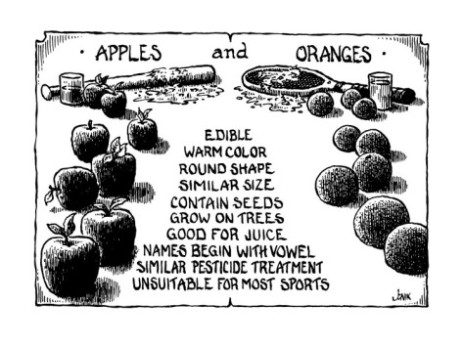
Okay, “lies” might be a bit extreme, but it’s true they’re often misunderstood or misperceptions.
When done right, brand identities can be an instant way to communicate the vision, values, and what someone can expect at your church or ministry. They can break down barriers, pave the way to connect new people, and focus your culture. When done wrong, it can reflect an inaccurate image, create divisions, or even be misleading.
So without further ado, let’s cover six of the most common misperceptions ministries have about brand identities.
Lie #1 : Identities Don’t Matter Much
Brands, logos, and marketing are basically all just fluff anyway, right? Wrong. We live in a visual culture and how we communicate matters. People form impressions about who we are and what we do based on how we communicate. Having an identity that accurately reflects the heart, vision, and culture of your church can go a long way in reaching people and overcoming misperceptions.
But before you start sketching up ideas, be clear about what you want to communicate, and who you’re communicating to.
Your identity is a channel for connecting people to your vision and needs to be viewed with a strategic lens.
It’s less about which color or font you like best, but what these things say to the people you’re trying to reach.
Lie #2 : It’s Critical to be Literal
I mean, how will anyone know this is a church if we don’t include a cross, dove, and a picture of the building? And of course we can’t forget adding a globe to reflect our heart for missions… Stop it. Just stop it. Your church is more than your building.
The best marks are the ones that allow room for you to fill it with meaning and point people back to the vision.
Embrace simplicity and create conversations, remembering the identity will always be delivered in context. If the logo is on your business card, chances are you’re handing it to someone. The sign on your building? People are on the campus. Your website? There are lots of opportunities to tell the rest of the story. The Nike swoosh is one of the most recognized identities on the planet and it’s not a picture of a pair of shoes.
Lie #3 : Copying is Okay
If we just copy what another church created, it’s not a big deal, right? What they’re doing seems to be working, so it’ll probably work for us, too, right?
Don’t get me wrong—it’s okay to be inspired by others. But when inspiration stops short and becomes imitation, you’re robbing your church of the unique identity God intended for your ministry. Invest the time to make the ideas that inspired you your own.

Lie #4 : The More the Merrier
Some churches may think an identity isn’t important at all, and then there are others infected with logo-itis. It almost feels like Oprah showed up one day and stared handing them out. “YOU get a logo, and YOU get a logo…”
Unfortunately, when every ministry has its own identity, it splinters the collective identity of the church.
Worse yet, we’re setting these ministries up to compete with each other for the congregation’s attention. When everyone has their own look, feel, and voice within the same church, it runs the risk of brand schizophrenia.
There’s enough already trying to compete for people’s attention—the last thing we want to do is compete with ourselves.
A simple rule of thumb that’s worked for many churches is to draw a clean line in the sand: If a ministry has its own weekend worship service, it’s okay to have its own logo because they’re serving a distinct audience with distinct needs. (For example, Children & Students = Yes. Ministries such as Men’s, Women’s, and Redheaded Knitters Named Marge = No.)
Just remember to include your church’s primary logo on any mailings or communication tools these ministries use so everyone is clear your student ministry is still part of the church and not an island unto themselves.
Lie #5 : Rollouts Can Be Random
It’s painful to think about, but there are ministries large and small that have invested a ton of time, energy, and resources into creating a new identity but then completely dropped the ball when it came to introducing their bouncing new baby brand to the world.
One pastor thought if he just started casually mentioning the new name during his weekend messages, people would somehow subconsciously get used to it and be more open to the change. Another very large church thought it’d be okay to just start using the new logo on envelopes containing year-end giving statements before the new website (or anything else) was ready because, “It was just sitting there not being being used.” The congregation had no idea a change was even on the horizon in both cases.
When something as visible as your identity changes, there’s a powerful opportunity to cast vision and celebrate stories.
Don’t let it slip by. Take time to think about when the best time might be to roll out your new identity, how it might align with other opportunities, and above all, tell people WHY it matters.
Lie #6 : A New Brand Will Fix It
This happens a lot—Attendance is flat or has started to decline, the church wants to do a better job of reaching younger (or different) people than they’re currently reaching, the people in the pews aren’t as friendly as they should be, or perceptions need to be shifted to emphasize a focus on serving.
The solution? Maybe creating a new identity that feels more hip, diverse, friendly, outward-focused, or fill-in-the-blank will magically fix these problems and change who they are on the inside as well. Ah, if it were only that simple.
It’s true that a new brand identity can go a long way in recharging the batteries of a ministry, but ultimately changes need to happen on the inside as well for it to be effective. (And authentic)
Does this make sense? What misperceptions have you run in to?













